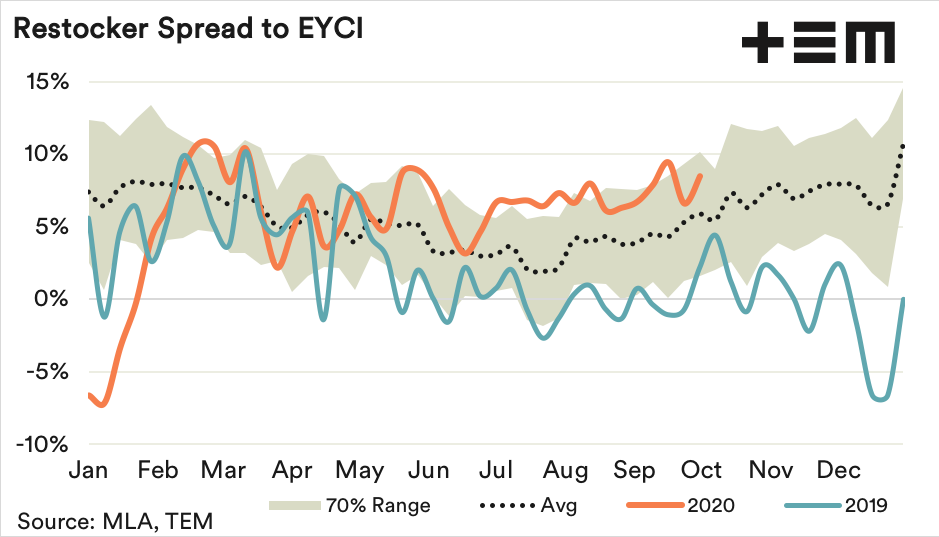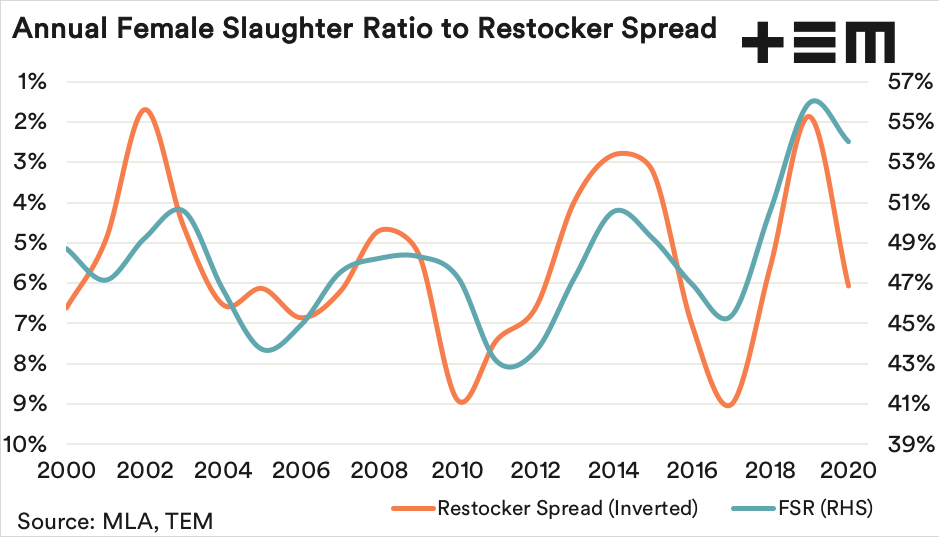Heard about a rebuild

The Snapshot
- When the Female Slaughter Ratio (FSR) is above 47% it signifies the herd is in liquidation, as historically when this has occurred it usually coincides with herd decline.
- Conversely, when the annual FSR is below 47% it points towards a herd rebuild phase.
- The improved climatic outlook has seen the restocker spread move from a 5% discount at the start of 2020 to a healthy 10% premium during March.
- Historically, when the annual average restocker spread premium lifts above 6% the FSR tends to dip below 47% and the Australian cattle herd enters a rebuild phase.
The Detail
The best indicator to demonstrate the liquidation or rebuild status of the Australian herd is the female slaughter ratio (FSR). This ratio shows the proportion of female cattle slaughtered as a percentage of total slaughter.
On an annual basis, when the FSR is above 47% it signifies the herd is in liquidation as historically when this has occurred it usually coincides with herd decline. Conversely, when the annual FSR is below 47% it points towards a herd rebuild phase.
The FSR is created using Australian of Bureau of Statistics (ABS) cattle slaughter data which, until recently, was released on a lagged basis each month. Unfortunately, the ABS cattle slaughter data has now shifted to a quarterly instalment and the next one isn’t due until November (for the September quarter). Which means we are currently in the dark as to the status of the Australian cattle herd rebuild or liquidation.
We can get an idea of the intent to restock by assessing the spread of National Restocker Steer prices to the Eastern Young Cattle Indicator (EYCI). During a relatively normal season the restocker spread can range between 0% to a 10% premium to the EYCI.
This season the improved climatic outlook has seen the restocker spread move from a 5% discount at the start of 2020 to a healthy 10% premium during March. Since July the restocker spread pattern has closely followed the upper band of the normal seasonal range, suggesting strong optimism among restockers to rebuild.
A comparison of the annual restocker spread to the FSR shows that the restocker spread can be used as a proxy FSR, often acting as a lead indicator for the movement of the FSR. Historically, when the annual average restocker spread premium lifts above 6% the FSR tends to dip below 47% and the Australian cattle herd enters a rebuild phase.
(Note – the restocker spread is inverted on the chart below to demonstrate this pattern more clearly).
Based on the movement of the restocker spread it suggests we have entered a rebuild phase for the Australian cattle herd this year. The annual FSR remains above 47% but bear in mind this is a lagged indicator. We expect the FSR to confirm that a move toward rebuild is underway as the ABS quarterly cattle slaughter data becomes available later in the season.



